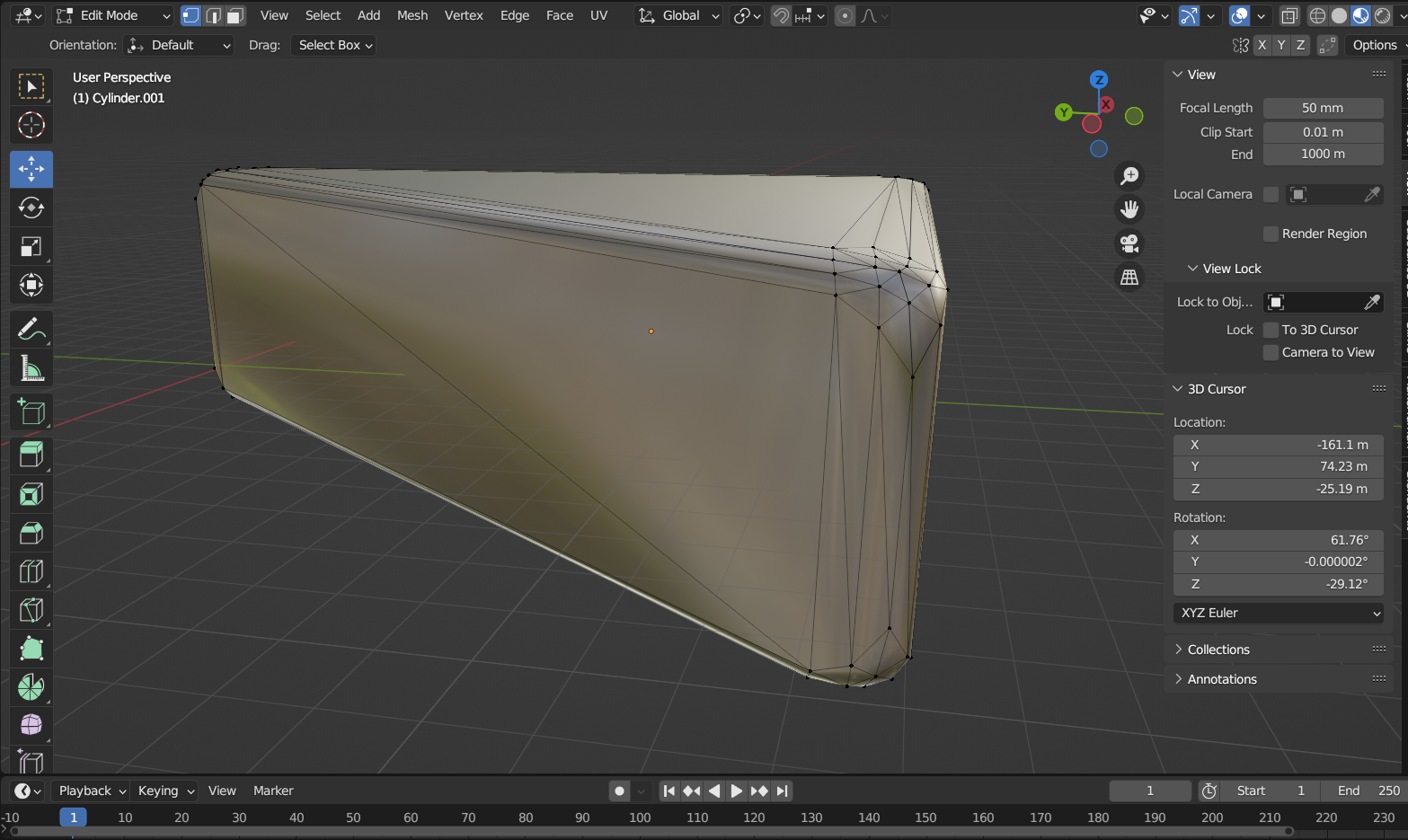
Translating physical objects into digital models is a process that blends creativity with technical skill. There are many ways to approach 3D modeling, each suited to different types of objects. For example, a popular method is photogrammetry, which uses a series of photographs taken from multiple angles to reconstruct an object in 3D. I used this method in a previous Voyager edition, and while it can be quick and efficient, it was not suitable for the Maastricht University paperweight. The highly reflective surface of the glass caused light to scatter in unpredictable ways, making it difficult for the computer to accurately recognize the shape and details.

The Reflective Surface of the UM Paperweight
Given these challenges, I decided to model the object manually in Blender. The shape of the paperweight, a triangle with softly beveled edges, was straightforward enough to recreate within the limited time I had. After shaping the object, I worked on the glass material, which posed its own technical challenges.

Creating the Paperweight's Shape in Blender
Reconstructing the paperweight manually gave me a closer connection to the object’s physical characteristics. The process of manually creating this 3D model came with its own challenges and limitations, which are explored in more detail in the articles that follow.